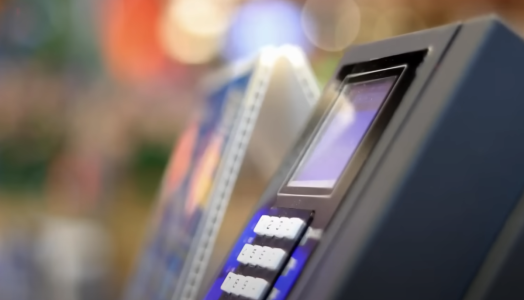New data-sharing rules for SNAP: What recipients need to know
By
Veronica E.
- Replies 0
For millions of Americans, the Supplemental Nutrition Assistance Program (SNAP)—formerly known as food stamps—is a crucial part of everyday life.
It helps families afford groceries, supports older adults living on fixed incomes, and provides relief during challenging times.
In 2023, the program reached over 41 million people.
So when federal policy changes are announced, it’s understandable that SNAP recipients want to know what’s happening and how it might affect them.
Recently, new actions by the Trump administration have introduced updated rules about how states must report information related to SNAP.
While these changes are being described as efforts to improve oversight and reduce fraud, some recipients and advocates are concerned about the potential impact.
Here's what you need to know.

What’s changing with SNAP?
In March, President Donald Trump signed an executive order called “Stopping Waste, Fraud, and Abuse by Eliminating Information Silos.”
It directs all government agencies to share unclassified records, data, and IT systems with the federal government—especially for programs funded by federal dollars like SNAP.
Following the order, the US Department of Agriculture (USDA) issued a new requirement: states must now share detailed records related to SNAP recipients.
According to the USDA’s senior policy advisor for integrity, Gina Brand, states are expected to provide:
Previously, states managed their own SNAP systems independently, creating what the USDA referred to as “information silos.”
Now, the goal is to consolidate that information and give the USDA real-time access to who’s receiving benefits.
Gina Brand explained that the distributed administration of SNAP enables states to meet local needs but also leads to disconnected data systems.
"At present, each state, district, territory, and payment processor is a SNAP information silo," Brand wrote.
"These various entities maintain discrete collections of SNAP application, enrollment, recipient, and transaction data, each of which is necessary in ensuring the integrity of the program.
"Thus, pursuant to the President's Executive Order and to confirm that SNAP is being administered appropriately and lawfully, USDA and FNS (Food Nutrition Service) are working to eliminate these information silos."
Also read: SNAP rules get an overhaul—Here’s what to know.
Why is this happening?
According to a USDA press release issued on May 6, the department’s aim is to preserve SNAP for those who are eligible while improving visibility into how the program is managed.
USDA Secretary Brooke Rollins stated that President Trump is requiring the federal government to have access to all programs it funds and SNAP is no exception.
She noted that the program has operated on autopilot for years, without USDA insight into real-time data.
The Department is focused on appropriate and lawful participation in SNAP, and the data request is one of many steps being taken to improve oversight.
Supporters of the change say it will help reduce fraud, prevent duplicate applications, and ensure taxpayer dollars are being used responsibly.
Others worry that more oversight could lead to administrative hurdles for people who genuinely need support.
Also read: New SNAP eligibility crackdown: Are you at risk of losing your benefits?
What does this mean for you?
Most SNAP recipients won’t see immediate changes in how they use their benefits. Your EBT card will still work at participating stores.
However, here are a few things to keep in mind:
Also read: Your favorite restaurants could soon accept SNAP benefits—here’s what you need to know!
How to protect your benefits
To stay prepared and avoid disruptions, here are a few simple steps:
The USDA has not provided an official deadline for when states must fully comply, but they’ve made it clear that states must take steps to begin data sharing.
As agencies adjust their systems, there may be minor interruptions, but no large-scale changes to the benefits themselves have been announced.
Read next: SNAP shake-up: Three major changes to benefits this year–See how they affect you

Have you seen any changes to how your SNAP benefits are processed? Are you concerned about privacy or verification? Or do you have advice for other readers on how to navigate the program? Feel free to share your experience in the comments. We’re here to learn from one another and help keep our communities informed!
It helps families afford groceries, supports older adults living on fixed incomes, and provides relief during challenging times.
In 2023, the program reached over 41 million people.
So when federal policy changes are announced, it’s understandable that SNAP recipients want to know what’s happening and how it might affect them.
Recently, new actions by the Trump administration have introduced updated rules about how states must report information related to SNAP.
While these changes are being described as efforts to improve oversight and reduce fraud, some recipients and advocates are concerned about the potential impact.
Here's what you need to know.

SNAP helps millions of Americans afford groceries each month—recent policy changes aim to improve how the program is monitored and managed. Image Source: YouTube / NBC News.
What’s changing with SNAP?
In March, President Donald Trump signed an executive order called “Stopping Waste, Fraud, and Abuse by Eliminating Information Silos.”
It directs all government agencies to share unclassified records, data, and IT systems with the federal government—especially for programs funded by federal dollars like SNAP.
Following the order, the US Department of Agriculture (USDA) issued a new requirement: states must now share detailed records related to SNAP recipients.
According to the USDA’s senior policy advisor for integrity, Gina Brand, states are expected to provide:
- Records sufficient to identify individuals as applicants for, or recipients of, SNAP benefits, including but not limited to personally identifiable information in the form of names, dates of birth, personal addresses used, and Social Security numbers.
- Records sufficient to calculate the total dollar value of SNAP benefits received by participants over time, with the ability to filter benefits received by date ranges.
Previously, states managed their own SNAP systems independently, creating what the USDA referred to as “information silos.”
Now, the goal is to consolidate that information and give the USDA real-time access to who’s receiving benefits.
Gina Brand explained that the distributed administration of SNAP enables states to meet local needs but also leads to disconnected data systems.
"At present, each state, district, territory, and payment processor is a SNAP information silo," Brand wrote.
"These various entities maintain discrete collections of SNAP application, enrollment, recipient, and transaction data, each of which is necessary in ensuring the integrity of the program.
"Thus, pursuant to the President's Executive Order and to confirm that SNAP is being administered appropriately and lawfully, USDA and FNS (Food Nutrition Service) are working to eliminate these information silos."
Also read: SNAP rules get an overhaul—Here’s what to know.
Why is this happening?
According to a USDA press release issued on May 6, the department’s aim is to preserve SNAP for those who are eligible while improving visibility into how the program is managed.
USDA Secretary Brooke Rollins stated that President Trump is requiring the federal government to have access to all programs it funds and SNAP is no exception.
She noted that the program has operated on autopilot for years, without USDA insight into real-time data.
The Department is focused on appropriate and lawful participation in SNAP, and the data request is one of many steps being taken to improve oversight.
Supporters of the change say it will help reduce fraud, prevent duplicate applications, and ensure taxpayer dollars are being used responsibly.
Others worry that more oversight could lead to administrative hurdles for people who genuinely need support.
Also read: New SNAP eligibility crackdown: Are you at risk of losing your benefits?
What does this mean for you?
Most SNAP recipients won’t see immediate changes in how they use their benefits. Your EBT card will still work at participating stores.
However, here are a few things to keep in mind:
- More data sharing: Your personal information will now be shared more directly between your state and the federal government. This is intended to identify duplicate applications or potential errors.
- Increased verification: You might be asked more frequently to verify details like your income, household size, or address. If contacted, respond promptly to avoid any delays.
- No change to benefit amounts: These updates focus on oversight and data accuracy. There’s no current plan to reduce benefit amounts for eligible recipients.
- State compliance is required: While no specific deadline has been announced, states were warned that failure to comply may trigger noncompliance procedures. Some temporary administrative delays may occur as systems are updated.
Also read: Your favorite restaurants could soon accept SNAP benefits—here’s what you need to know!
How to protect your benefits
To stay prepared and avoid disruptions, here are a few simple steps:
- Keep your contact details updated with your local SNAP office
- Respond quickly to any request for additional documentation
- Be alert to scams—SNAP offices will never ask for your full Social Security number or EBT PIN over the phone or by email
- Sign up for updates through your state’s official SNAP portal.
The USDA has not provided an official deadline for when states must fully comply, but they’ve made it clear that states must take steps to begin data sharing.
As agencies adjust their systems, there may be minor interruptions, but no large-scale changes to the benefits themselves have been announced.
Read next: SNAP shake-up: Three major changes to benefits this year–See how they affect you
Key Takeaways
- The USDA is requiring all states to share detailed SNAP recipient data with the federal government following a March executive order from President Donald Trump.
- States must report personally identifiable information and benefit history, giving the USDA real-time access to who’s receiving SNAP support and how much.
- The goal is to reduce fraud and ensure the program serves only eligible recipients by eliminating gaps in communication between agencies.
- While no benefit reductions have been announced, states could face penalties for failing to comply with the new data-sharing rules.
Have you seen any changes to how your SNAP benefits are processed? Are you concerned about privacy or verification? Or do you have advice for other readers on how to navigate the program? Feel free to share your experience in the comments. We’re here to learn from one another and help keep our communities informed!






